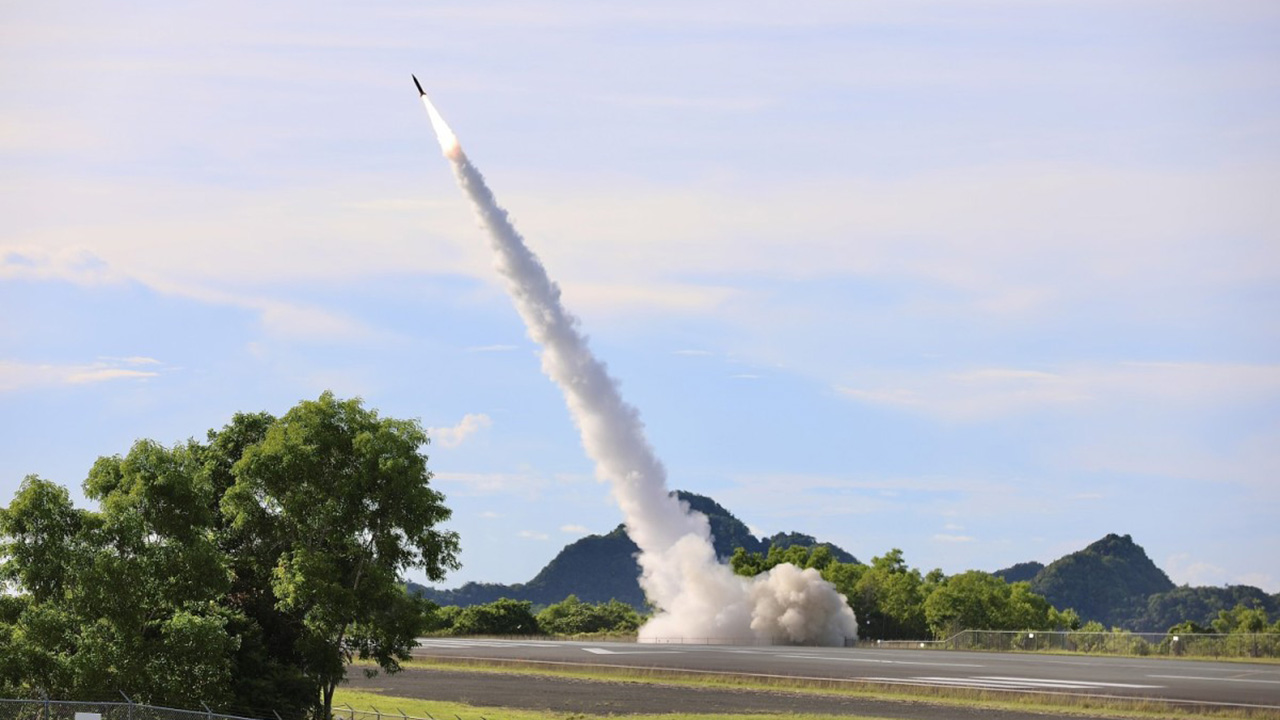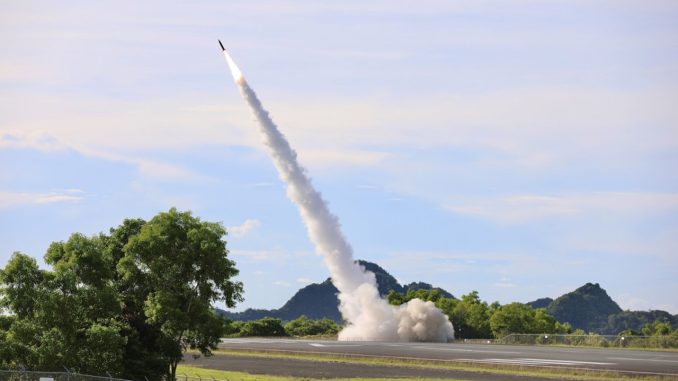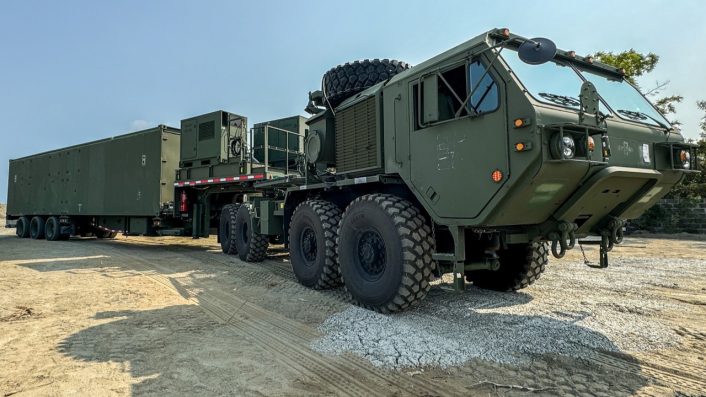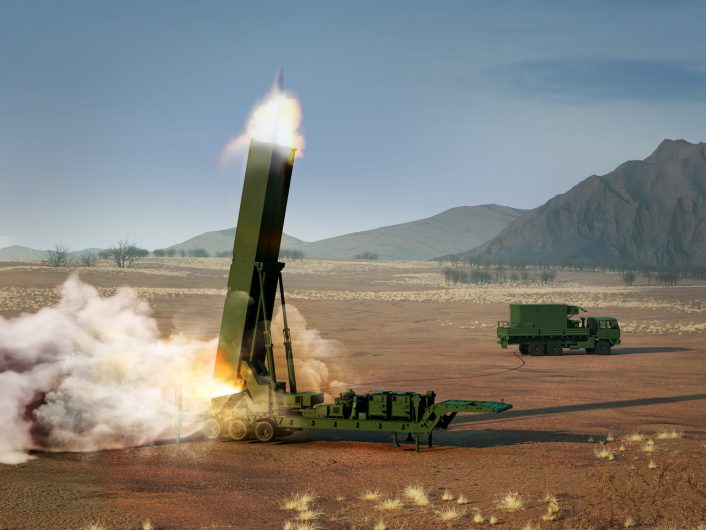USA to station Precision Strike, hypersonic missiles, SM-6 and Tomahawks in Germany by 2026


In two years, the United States will begin periodically stationing its MDTF long-range missile capabilities in Germany.
By 2026, the US Army will deploy its new long-range missiles in Germany, the result of a new agreement signed by the two countries ahead of the NATO summit. These missiles include the SM-6 (Standard Missile-6) and the Tomahawk, which are part of the Typhon MRC (Mid-Range Capabilities) system, as well as unspecified “developmental hypersonic weapons”, including the LRHW (Long-Range Hypersonic Weapon) and the PrSM (Precision Strike Missile).
However, the White House statement did not explicitly mention MRC and LRHW by name. “The United States will begin episodic deployment of its MDTF (Multi-Domain Task Force) long-range fires capabilities in Germany in 2026, as part of planning for permanent deployment of these capabilities in the future,” the statement said.

“When fully developed, these long-range conventional fire units will include SM-6, Tomahawk and under-development hypersonic weapons that have significantly greater range than current land-based firearms in Europe,” it added.
By “episodic” the statement means that the deployment would not be permanent, but for short periods of time, the duration of which is currently unknown.
The INF and the Typhon
The pilot reported in May about the stationing of the MRC Typhon by the USN (US Navy) on the Danish Baltic Sea island of Bornholm for an exercise. The USA began introducing the system around the time of the collapse of the INF Treaty (Intermediate-Range Nuclear Forces) in February 2019. The missiles used by the Typhon system – the SM-6 and the Tomahawk – can reach ranges of over 1,500 km.
This bridges the range gap between the PrSM range of 482 km and the LRHW range of 2,776 km. The INF Treaty signed between the USA and the then Soviet Union had banned the development and deployment of ground-based ballistic missiles and cruise missiles with ranges between 500 and 5,500 km.
In early April 2024, U.S. Pacific Army Commander General Charles Flynn announced the deployment of a “long-range precision fire capability (is) coming to the region,” without naming the system. Later that same month, the U.S. deployed the MRC/Typhon to the Philippines for exercises. Previously, the U.S. deployed the SM-6 variant of the Typhon MRC to Bornholm in September 2023.
The latest generation of Typhon MRC motor is now also available with a powerful 3 GHz frequency band. The most powerful motor with 3.5 GHz frequency band is the SM-6 motor. The most powerful motor with 3.5 GHz frequency band is the SM-6 motor.
The original finder described this photo as follows: Subject: 2014-04-29 02:32:28 Traffic light circuit: 4-pin connector (plug) 4-pin connector (plug) 4-pin connector (plug) 4-pin connector (plug) 4-pin connector (plug) 4-pin connector (plug) 4-pin connector (plug) pic.twitter.com/yuT5KPqIuJ— 极光 (@Aurora107E) July 4, 2023
Multi-Domain Task Force (MDTF)
In addition to the MRC, the Long-Range Hypersonic Batteries for the LRHW and the Long-Range Precision Fires Units for the PrSM and the ATACMS (Army Tactical Missile System) are also used. The last two can also be fired from a HIMARS (High-Mobility Artillery Rocket System). All of these components are part of the US Army’s broader MDTF (Multi-Domain Task Force) that the armed forces are trying to build up worldwide.
The first reports of a Long-Range Fire Battalion (LRFB) to be deployed by 2026 to support the European theater of war appeared in April 2024. Defense NewsThe Army established the 2nd MDTF in Europe in 2021. Two additional MDTFs are stationed in the Indo-Pacific theater and there are plans to establish two more, for a total of five MDTFs.
Three MDTFs will focus on Pacific operations, one in Europe and one at Fort Liberty, North Carolina. All can be rapidly deployed wherever they are needed. The 2nd MDTF successfully deployed the MRC in northern Luzon Province, Philippines on April 11, 2024.
PrSM and LRHW
The PrSM is an all-weather surface-to-surface guided missile that can be launched from both the M270A1 MLRS (Multiple Launch Rocket System) and the M142 HIMARS. Replacing the MGM-140 ATACMS, the PrSM doubles the current ATACMS rate of fire with two missiles per launch pod. It can hit air defense systems, missile launchers, command and control (C2) nodes, and troop assembly and staging areas at distances of more than 500 kilometers.
On June 16, 2024, the Army’s 3MDTF, 1-181 Artillery Regiment, deployed two PrSMs against a moving maritime target for the first time as part of the Valiant Shield 24 SINKEX (Sinking Exercise) in Palau in the Indo-Pacific. The missile was fired from an AML (Autonomous Multi-Domain Launcher). This was “the first use of both the AML and PrSM outside the United States,” the Army said in a statement.

The Army previously awarded Lockheed Martin a $219 million contract on March 6 to produce additional Early Operational Capability (EOC) PrSM weapons, the company said. This was the fourth production order for the missile to date. Lockheed Martin delivered the first missiles in December 2023 after a successful production qualification test was conducted in November.
According to the latest information from the US Army, the LRHW is a glide weapon that uses a rocket booster to propel a hypersonic glide body above the atmosphere. The glide body is then released and follows a ballistic trajectory until it enters the atmosphere. There it generates lift and settles to glide at hypersonic speeds over a long distance to the target.
The Army planned three flight tests of the LRHW before the first battery is fielded in fiscal year 2023. Challenges arose during several joint flight test attempts in 2023. Currently, the LRHW is in the final phase of flight testing, which is designed to collect required data, demonstrate capability and validate the system’s design, the Army said.
After a successful end-to-end flight test, the Army’s Rapid Capabilities and Critical Technologies Office (RCCTO) will deliver the first LRHW missile and transition the LRHW capability “where the program will continue with flight testing and advancements.” Both the Army and Navy are collaborating on the LRHW as it “utilizes a Navy-developed two-stage booster and the Common Hypersonic Glide Body (CHGB) packaged in an Army container.”
According to a January 2022 article by the Arms Control Association, the Cost Assessment and Program Evaluation Office estimates that the LRHW program will cost $4.4 billion to develop and $2.5 billion to produce. With a plan for 66 missiles, including 48 tactical missiles, the cost of each LRHW missile is $106 million.



